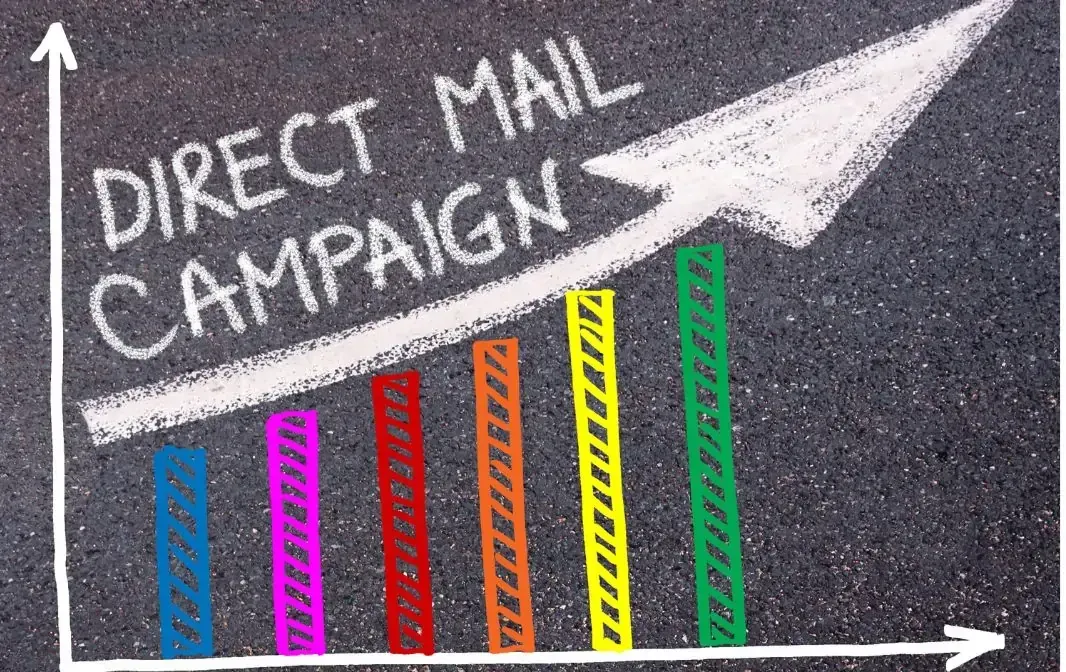The Ultimate Guide to Understanding Tracking and Analytics in Dental Marketing
What Your Online and Offline Data Can Tell You: A Guide for Dental Professionals
You’re committed to doing everything you can to grow your dental practice.
But are your current marketing strategies -- whether they’re online or offline -- really as effective as you think they are?
If you’re struggling to bring in new patients, do you have an understanding as to why that’s happening? And is that understanding informed by actionable, real-time data and analytics? Or, are you simply “guessing,” wasting your marketing budget hoping that this time, you’ve found the solution?
You already know the answer, and it’s why you’re here. Now is the time to start tracking your data and analytics when it comes to your digital marketing plan and your phone referrals.
But why does tracking matter, and what can the process really tell you?
Keep on reading this post to find out.
Know Your Data: Digital Analytics and Your Dental Practice
Your dental practice’s website is getting tons of traffic, lots of clicks, and you can even see that you have a few shares on social media and other industry blogs.
The only problem?
It’s not translating when it comes to new patients, increased appointments, and most of all, profits.
Remember: it’s not enough just to get lots of traffic to your dental practice’s website or blog.
Taking the “billboard approach” to online marketing -- where you put up your site, cram it with a few keywords, and just hope the right people come across it and contact you -- isn’t cost-effective (or really, effective at all.)
Sure, an increase in web traffic might bump you up your dental practice in the search engine result pages (SERPs) for a little while.
But what is all that random traffic actually doing to help you to grow your business? How many site visitors are actually interested in booking some sort of dental service? How many of those visitors are actually within your service area? How many of those visitors will actually take an action on your website?
This is why branded, targeted marketing matters.
And if you’re not attracting your target market?
Then you need to know why.
Analytics can help you make that happen. They do this by teaching you more about your market, your site visitors, and what is and isn’t working when it comes to everything about your website, from things like site design and loading speed to blog posts and your targeted keywords.
Now, let’s talk about the online analytics that you need to start tracking as a part of your overall marketing strategy.
What Your Website Can Teach You
Of course, the most important thing to track and analyze is your dental practice’s website data.
Your website visitors are the digital equivalent of “window shopping” -- but before analytics came along, you were never able to learn much of anything about the people who eagerly peered inside shop windows.
You didn’t know if they were residents or visitors, which products they were interested in, how serious they were about buying, what they were doing before they decided to window shop, or any of their personal information. You just hoped they walked in and made a purchase, or came back another day.
Analytics has revolutionized the way your practice -- and all other businesses -- can understand and market to potential patients or customers.
When you track your website , you can learn where your web traffic came from and how they were directed to your website.
For example, did they come to your website organically, through an entry into a search engine?
Or, did they head to your website because they found you on a social media platform, from a guest post you wrote on another website, or through your email campaign?
Did they already know your URL and type it into their search bar directly? Are they referral traffic, meaning that they came from another website that linked to you? If so, what website brought them to yours?
Already, you have countless information that can inform your overall marketing strategy.
What Else You Can Learn From Your Web Traffic
Your website analytics can also tell you which of your website’s internal pages your traffic is spending the most -- and least -- amount of time on. The same goes for your most popular pages and least popular pages.
This will you allow you to notice top trends about the people who want to come to your practice. If your clear aligners page is getting tons of traffic and clicks, it might be time to do a blog post or email marketing campaign about how Invisalign works.
You can learn which page is your “exit page” -- meaning which one causes your visitors to leave the website. This page might need some sprucing up, it may need to be combined with another, or you might decide to remove it altogether.
Your web traffic will also give you incredible insight into your return visitor conversion rate. Not everyone books an appointment on their first visit. This rate may be able to tell you how many visits it takes for a visitor to finally take an action on your website. This does wonders to increase your overall ROI.
You’ll learn about your average bounce rate -- which means when visitors click on your website, and then almost immediately click away from it. Maybe slow loading time, irrelevant content, or bad website design are to blame. But if your bounce rate is high, you’ll know right away that there’s a problem.
These analytics will also help you to understand your average cost per conversion. How much money do you spend on your current digital marketing strategy, and is it paying off?
Most of all, your web traffic will give you incredible insight into the demographics of the people visiting your site. Be prepared to be shocked: many businesses realize that what they thought their target market was is way off from who is actually visiting their website and interacting with it the most.
Other Digital Data to Track
Of course, your website is far from the only thing that you should be tracking when it comes to your digital data.
You should also look into your email marketing analytics.
This will tell you the percentage of your email subscribers that actually opened your marketing email. You’ll also learn when they opened the email, so that you can send out your next email at the most opportune time. You’ll even get insight into how many people unsubscribed from your email marketing list after receiving a certain campaign.
You should also track your blog visitors -- and ensure that you update your blog at least twice a week.
When you create blog content, you’ll get an insight into the specific keywords -- the phrases that people type into search engines when they’re looking for a dental practice -- that brought the most traffic to your page.
You can also learn how much revenue any ads that you have on your blog will generate. The same goes for how effective any PPC campaigns you currently have in place are.
As you would with your overall website, your analytics can also tell you the “value” and ROI generated by each individual blog posts. You’ll also learn about the subjects and styles of posts that your visitors enjoy the most -- so you can create more like them in the future.
Why Call Tracking Matters to Your Dental Practice
Now, let’s talk about why call tracking is just as important as digital analytics when it comes to measuring the effectiveness of your current advertising campaigns.
Here, your goal isn’t just to understand how many calls come into your dental office. You want to know the time of day, and the day of the week, when your office gets the most calls. This way, you’ll be able to have plenty of staff on hand to ensure that you connect with all your leads during peak hours.
You can also take a closer look at the average length of each call. Do you feel as though your team spends enough time with each caller? Or, do you need to improve your call script and employee training so that you can speed up the overall lead conversion process?
Call tracking also helps to inform your approach to call forwarding.
You can better determine who in your office should speak to a caller depending on their specific questions and interests. For example, if a current patient calls in with a question about insurance, they may want to speak to someone in your billing department. But if a caller has questions about porcelain veneers; they should speak to a dental assistant, or someone who can tell them more about how the procedure works.
This way, leads get the best and most accurate information possible -- which makes them much more likely to convert.
When you use call tracking, you’ll also be able to get a better understanding of the overall ROI of each mailer, online marketing campaign, social media post, or other form of advertising. This way, you’ll understand the types of marketing that your leads are the most likely to respond to.
You’ll use unique phone numbers for each campaign, so that it will be easy to trace the source of the calls.
The Importance of Quarterly Reviews
Whether you’re focusing on online or offline campaigns, one thing is certain: your dental practice -- and the services you’re able to offer your customers -- is constantly evolving.
Your advertising strategy should do the same.
In order to create the best possible campaigns, you’ll need to be able to identify trends when it comes to your demographic and their response to your marketing efforts.
Detailed quarterly reports will help you to make sure you’re heading in the right direction when it comes to marketing.
Your New Mantra: Test, Track, Tweak, Repeat
So, you’ve learned all about your site visitors, your email marketing campaigns, your print ad campaigns, the calls coming into your office, and more.
You’ve done all you need to do now, right?
Absolutely not.
Have you tested them to make sure they’re really going to be as effective as you think they are? If the test results weren’t what you expected, have you made the necessary improvements? Have you continued to track and collect data/analytics over the life of your new online or offline advertising campaign? Are you updating and tweaking that strategy in real time so that it can have the highest possible ROI?
After you’ve made the initial changes to your online and offline marketing strategy, the journey is beginning, not ending.
Remember to test, track, tweak, and repeat.
Need Help with Tracking and Analytics for Your Dental Practice?
As you’ve learned from this post, there are numerous steps to developing and monitoring a consistently effective advertising strategy.
Learning as much as you can about your market, from both online and offline data and analytics, is the key to creating marketing plans that work when it comes to an increase in both conversion rates and your overall brand recognition.
You don’t have to do everything on your own.
Whether you need expert call tracking, digital analytics, or even assistance developing the perfect marketing campaign in the first place, rely on us. We also provide you with simple, easy-to-read reports so that you know what’s happening every step of the way.
Ready to make a change for the better? Get in touch with us today.























